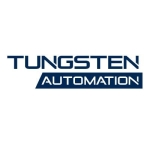What is our primary use case?
We are in healthcare, and the supply chain can be a fragmented process, and now with the Pandemic quite fragile. In recent years, companies have been implementing leaner supply chains to reduce their costs. We found that our best approach to dealing with supply distributions was to create a partnership with a distributor who could provide us with a very large percentage of our day-to day-supplies. We have Central inventories in each of our hospitals; however, we use a stockless operation Monday-Friday. This means we fill supplies for our nursing units on the weekends, but during the week, the distributor is picking, packing, and shipping those supplies in a low unit of measure. Orders are placed electronically by noon daily, and start arriving by late evening. A 'back order' list is sent to us each workday in the late afternoon - too late to do anything with it.
We did work with our distributor to develop a more customized spreadsheet that detailed each item, by hospital and delivery location. Each following day we would break the file down so that we could e-mail it to each area, to get feedback from them on critical needs. This took our resources time to prepare and send the next morning. Staff getting the information didn't have much time to review and respond. In addition, we would update each PO line item with the revised 'due date', for back-ordered lines - this was a manual process. This same resource would then use a tool to send each requestor a 'delayed delivery' e-mail notice. The overall PO update and communication process took an additional 1-2 hours a day in staff resource time.
With the robot doing this work for us, the vendor sends a file to an address by a certain time. They send it in at about 3:30 PM every day. The robot now takes that file and works that file, which it has ready for us usually by 4:30 PM. Now, it still may be too late for us to work, but the first thing in the morning, we have the file, and the Bot has already sent out notifications to all the users of any backorders. First thing, when they walk in the morning, they know what their backorders are. They didn't know that until halfway through the day before. Now, they get the information first thing in the morning so they can react. Now, we are getting the information first thing and have the time to work with the manufacturers and distributors to come up with other products so that we might backfill or get a branch transfer.
Our end goal was to make sure that we had a daily tool that was 100 percent accurate and could be deployed across a broad spectrum of healthcare workers. Then, they could get information faster and more accurately with as much information to eliminate a lot of extra calls and communication. That is what we embarked on. We dissected our current process and looked at all its different triggers to see how we could turn this into an automated tool. We broke down our process and identified everything that we were doing, then UiPath helped us identify what we needed to modify. We worked that into a tool where a Bot could come along and process it every day, then deliver every afternoon. That was our end result, and it's been extremely successful. We started using the tool last December.
We combined some automation that we already had in this process into this tool to make it a whole automated process, rather than partially bringing it under. We have a vendor who delivers us a report daily of all their backorders because we use the main distributor, so they deliver us a backorder report. Therefore, we made sure that they aligned it in a way that the robot could read it. Then, we wanted to break that down in a way so each of our hospitals could see their section. So, we added some data to this tool which allowed the robot to see that record, and say, "This belongs here, and this belongs here."
How has it helped my organization?
Our staff have been reassigned to more value-added tasks. We haven't eliminated anyone because it's been very challenging for us to keep up with the COVID-19 issues. Now, we have resources who have the time to contact vendors, and find out, "When are we getting this? Can we get ourselves pushed to the top of the list?" They can actually be a voice on the other line, a human voice, who communicates. When you're sitting there doing all this other work, you don't have the opportunity to spend it on being a voice for the health system. So, we put people back on working back orders with other vendors and doing other things that needed to be done. We have not eliminated staff because we are using them in more productive ways, getting more work done.
Our staff can now do the things that we need them to do. It has given us the agility to pivot and move to other things, because we are not trapped in trying to work these files every day.
Our customers are getting information about 12 hours earlier, which makes it much faster to resolve back order concerns for their areas. If they have procedures, or certain kinds of cases coming up, and see that they have a back order, then they have much more time to react and try to address their shortage.
What is most valuable?
It provides information to people by automating that information in a much faster time.
Since we are getting information out to folks faster, they can spend the resource time needed to determine the best approach for what to replace it with, or if we need to work with a sales rep. It ensures that our staff have the best tools to do their job faster.
What needs improvement?
We have not seen it do OCR, and that would be helpful. Right now, the tool will not read a PDF file, and we can't use PDF files. We want it to able to take an image, then take that image and put the particular field out in the right spot in a table. We have not seen it where you can scan a document in, then it reads fields and places those in a table.
For how long have I used the solution?
We began our journey last Fall - 2019
What do I think about the stability of the solution?
It is very stable. Once we got all the kinks worked out, there hasn't been any maintenance.
We had a little problem with getting it to run at night. We moved it off of one platform and put it on another one, which fixed that problem. These are things that we encountered early on that went away as we figured out how to resolve them. Most of those changes that we made were internal to our process and caused by some slow responses within our Citrix environment. Once we resolve those, we have not had issues with the tool itself.
I have one person in IT doing deployment and maintenance. We also have a second person under contract if we need support.
What do I think about the scalability of the solution?
The solution is scalable.
The robot processes the file in an unattended mode, then sends out an email with a link to its output file. From there, all the users, and there are probably about 20, get this file and react to it. They review it from their perspective because there are many hospitals involved. Each one of them has their own tab because the robot creates a tab for each. This makes it easy for them to go right to what they need. There are a lot of folks reviewing the results of what the robot has produced.
How are customer service and technical support?
I have not used their technical support.
Which solution did I use previously and why did I switch?
We were passively looking at some tools to automate some of our procurement processes. We are highly automated in our department, but we are always looking at ways to take the things that are not already automated, get into those, and see what parts of those we can streamline.
We met with UiPath last Fall. At that time, we went through a company by the name of Speridian, UiPath is a partner with them. We came to the conclusion that we had a manual process where the right components could be automated. Therefore, we made that our focus and started answering all the questions around the process to ensure that we had everything necessary for a robot to be able to answer the questions and keep moving the process forward.
How was the initial setup?
The initial setup was very straightforward. We outlined what we do and what our end result needed to be. They asked us some questions, then sat down with our resources and walked them through it (or did it through Webex). I don't think there was ever any confusion on what was being discussed.
We didn't spend that much time on the process. Overall, as far as our work, the deployment was 10 to 12 hours, if you look at the meetings and such. Most of the time was spent on their side, because they had to go back and do all the development. So, I thought it was very painless.
What about the implementation team?
We worked with the UiPath team and Speridian to ensure that the bot would know how to handle each aspect of the data and where apply it. As we tested it, we saw that we needed to go back and reconfigure this or this isn't how this is handled. We were kind of working through the things we forgot until we got to the point where, "Yes, this is it. We can do this every day."
We had the robot tied into an automated tool that we were already using to send notices out. They were able to pull up that tool and have these automated components to all this stuff that we had a manual person sitting there doing every day. She was sitting there taking this data and sending it out, and now the robot was like, "I got the data. I'll send it out." So, we just ran it through the whole process. However, it does take having resources who can ask the right questions. What I found with this team was they were good in actually asking the right questions and helping us with what the robot would need in order to make decisions. Because that's what the robot is doing, it is automatically looking at a value, and saying, "I do this. I have that."
We learned with it: How we need to respond and how we need to give the robot the feedback. It was quite an interesting process for us. Although you're always thinking you can automate so many things, there are components that you do need a person's brain to figure out. We found those pieces in this tool. We found some areas where, "Here's the exception." So, it even writes off the exceptions for us. While I do still need to have a person looking at exceptions, rather than the 100 lines that they used to have to look at, now they look at two, three, or four lines, then make decisions on those.
They gave us the opportunity to create a tool which would automate as much as possible, then provide us the data that we needed to act on. It has basically filtered out all the things that we didn't need to deal with. It has taken care of those, leaving us with everything that a human being needs to respond to.
I felt very comfortable with the UiPath person who was doing the programming, though I never really met him. I was very impressed. We talked on the phone a time or two, but they just seemed like they got it. They understood. It didn't take a long time for them to figure out what it was we wanted to do. They were able to tell us, "This is what we're going to need. Can you get it?" So, they were easy to work with. They also acted quickly. I thought the whole process of developing everything that we did went very quickly.
They were able to link into our tools. They made suggestions to us, "Well, these are exceptions. We can put these here. We can do this. We can give you all this." They were providing us with ideas on how we could even expand on this. I found that to be very helpful. I really thought that they did it very quickly. They did not take long to understand what we were trying to do before getting in and really learning the impact. When we needed a change, the changes have come very quickly.
It has gone so well that we will be doing a few more enhancements. Now that we've worked with the tool for a while, and know that the ability of UiPath and what they can do, we can enhance it even further.
What was our ROI?
We are doing things at a much earlier time in the day. The robot compressed the time it takes. We are getting our users' information earlier in the day. Now, it may take five to 10 minutes, where processes used to take half an hour or 45 minutes to go through everything.
With COVID-19, so many supplies have been impacted. Our line items expanded and grew, so it would have been very difficult management manually. Thankfully, we had this process in place last December. It really came to our aid in March, April, and throughout this year, because it has streamlined the process. It has given everybody more time to pivot and make decisions.
The UiPath tool takes redundant processes away, and says, "Let us handle those, then you do all those creative things." It has given us back a lot of staff resources that were being used up by mundane, redundant processes. That's how it worked in our world. In other areas, anytime you fill out a form or answer a question, a robot can post that to a table. There are all kinds of things it can do. However, for us, it took these manual processes that we were doing day in, day out without a lot of thought and gave us that time back to be more thoughtful of what it is we need to be doing to be more thoughtful of what it is we need to be doing, in order to ensure that our health system has the products that it needs to support the community. In my mind, that is what it is about: Giving back your resources to use them in the way they were intended and using a robotic tool to do those things that you can eliminate, like mundane, redundant processes.
What other advice do I have?
Start with processes that happen over and over every day. Something that you have to do, like data entry, whatever it is. Peel back the onion, then look and see how you can automate some of that through a tool. You have to look at what your processes are and understand how those are getting done today. Maybe even share that information with somebody outside your area, because people from the outside might say, "Well, why don't you do it this way?" Because you've lived it so long, you don't even know why you wouldn't nor do you know the questions to ask. Therefore, look at your base processes that you're doing day in, day out and see how you might be able to automate any aspect of those that doesn't require human thinking. I'm sure you will uncover many things.
It is a learning process for everyone, but I thought it was a very fast track learning. Sometimes, you think, "Well, this is going to take six months," and it didn't. In a very short time, we were seeing samples of what we were going to get. Therefore, I was very impressed with the amount of resource time that it took. It was beyond what I expected.
Some tools we are working on will reduce the purchase order build, but we haven't implemented that yet. That's a whole other project that we're working on with them, and that piece goes into procurement.
It is very doable. I was probably fairly skeptical, but once we started thinking about it, it became very clear that this would be just a slam dunk. You have to open up your mind to it, but it was something that when they said, "Well, we want to use some robotics." The fear is you're going to take my staff away. There are some cases of that, but it is not so bad. I don't have to worry about the robot taking days off, getting sick, having a mother in the hospital and needing to be with them. I don't have to pay it scale. I just don't have to do any of those things. Now, the robot can't automatically think outside the box, but sometimes it can depending on the questions I ask it.
Everybody just needs to take a breath step back, and say, "Yeah, maybe it can replace this." However, that doesn't mean we won't use this resource in another way.
I would rate this solution a 10 out of 10. I'm not the type of person who just gives a rating of 10 all the time, but this solution has just been a phenomenal tool for us.
Disclosure: PeerSpot contacted the reviewer to collect the review and to validate authenticity. The reviewer was referred by the vendor, but the review is not subject to editing or approval by the vendor.


















Great review thanks.